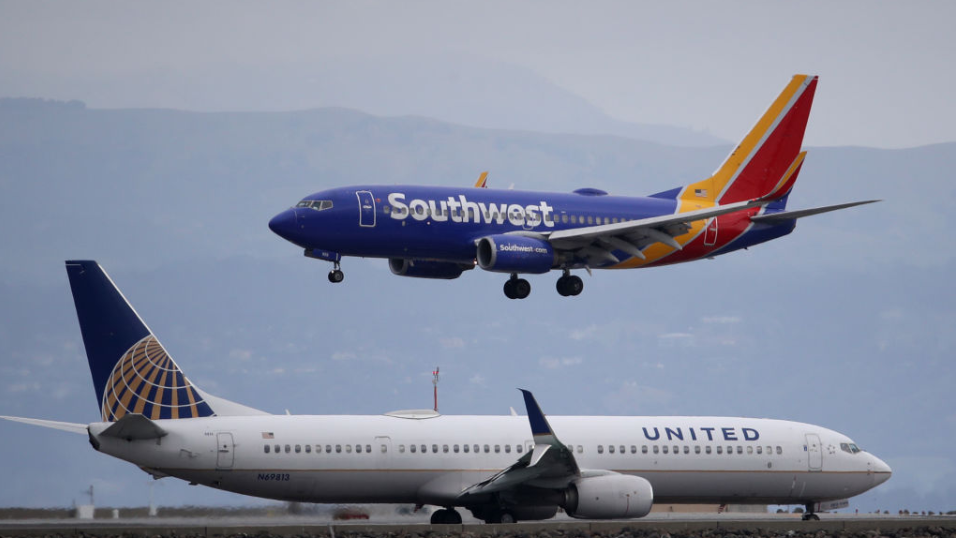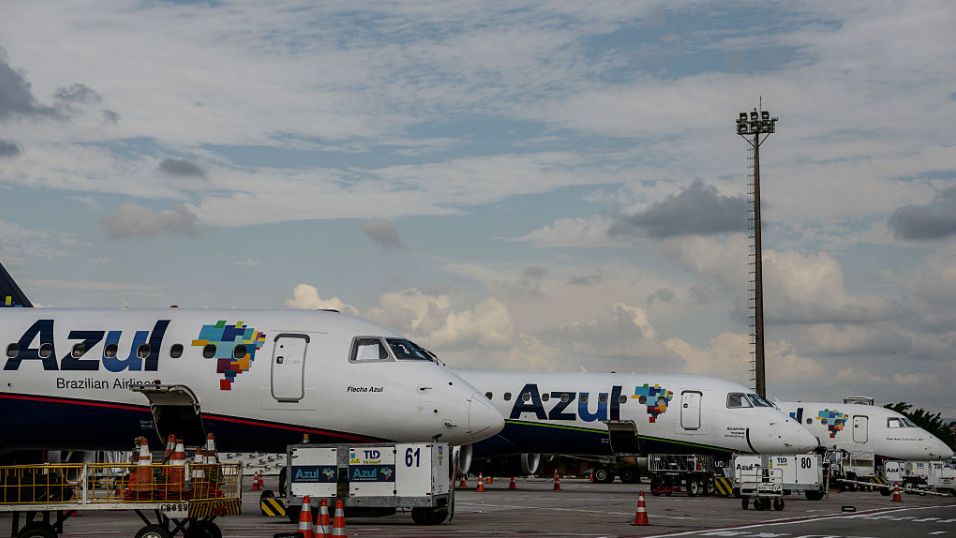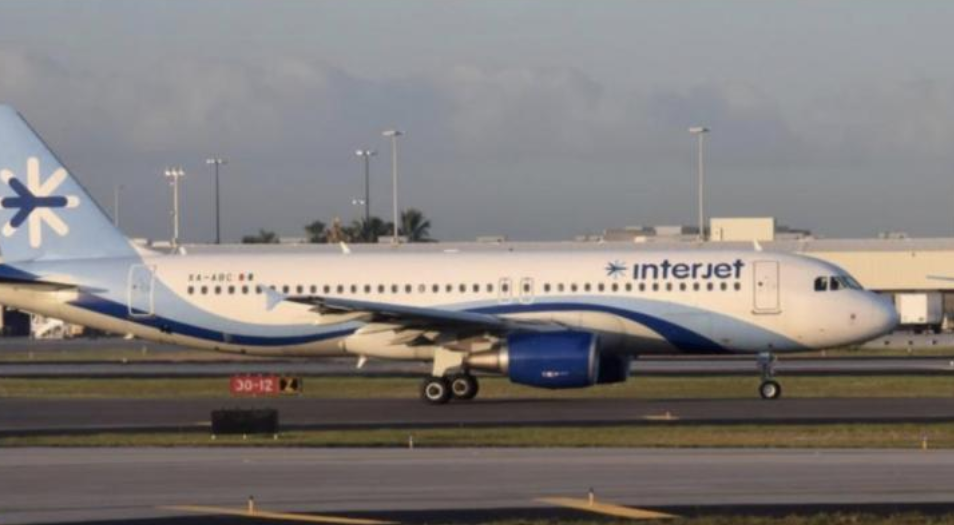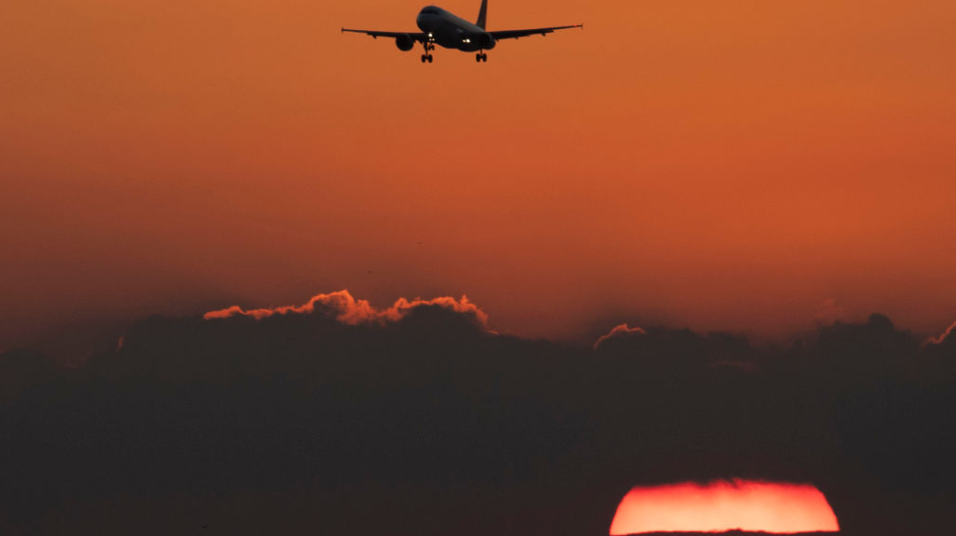COVID-19. By the end of May, most world airlines will be bankrupt
By the end of May-2020, most airlines in the world will be bankrupt.
Coordinated government and industry action is needed - now - if catastrophe is to be avoided.
As the impact of the coronavirus and multiple government travel reactions sweep through our world, many airlines have probably already been driven into technical bankruptcy, or are at least substantially in breach of debt covenants.
Cash reserves are running down quickly as fleets are grounded and what flights there are operate much less than half full.
Forward bookings are far outweighed by cancellations and each time there is a new government recommendation it is to discourage flying. Demand is drying up in ways that are completely unprecedented. Normality is not yet on the horizon.
TO READ ON, VISIT: COVID-19. By the end of May, most world airlines will be bankrupt

COVID 19: US airline capacity plummets as demand vaporises
The major global US airlines have slashed capacity by unprecedented levels as the country works to combat the spread of COVID-19 coronavirus through drastic measures, with large municipalities in the US encouraging bars, restaurants and cinemas to shut down. Schools across the country have already closed, with a growing level of uncertainty over when children will return to normal studies.
In conjunction with a major pull-down in supply, some large US airlines are also parking a large portion of their respective fleets. Delta's decision to ground 300 aircraft represents approximately 33% of its operating fleet. American is also temporarily parking a substantial number of widebody jets.
The grounding of these aircraft is necessary, but as capacity comes out of the system and revenue continues its free fall, it will take some time for the cost actions that airlines are taking to catch up with the precipitous decrease in demand.
Unfortunately, it could be some time before US and airlines worldwide see the bottom of the demand curve, and as those operators continue to adjust their expectations amid an increasingly fluid situation, management at Delta and United appear to be the most candid with their employees regarding the severity of the crisis.
TO READ ON, VISIT: COVID 19: US airline capacity plummets as demand vaporises

China aviation & travel looking to turn the corner post-COVID-19
The coronavirus is a fact of life now. Its ramifications are immense, but it will diminish - and then pass.
While we adjust to this new and changing world, it's important to try to see through the fog to what might be the next phase. These are early days, but by tracking developments from now on, we hopefully can perceive trends that point to a more stable environment.
In the first of a new weekly CAPA Membership series, we look in depth at forward or leading indicators of future demand. The aim is to provide insight into signs of stabilisation through the COVID-19 crisis in aviation/travel markets worldwide.
We begin our series with an outlook for China. The world's second biggest aviation market, China, was first into this crisis, so we ask: are there signs of stabilisation there? And if so, could this provide a guide to other markets that are now in free fall?
This report is prepared with thanks to our partners, CAPA Membership, OAG, ForwardKeys, PredictHQ and Skyscanner.
TO READ ON, VISIT: China aviation & travel looking to turn the corner post-COVID-19

COVID19: US budget airlines and LCCs feel the heat
Like their larger counterparts, low cost and budget operators in the US are working to fortify their balance sheets, slashing capex and cutting their capacity as COVID-19 dries up demand for air travel in the short term.
Alaska, Southwest, JetBlue and Spirit are cutting their capacity growth to varying degrees, and Alaska and Southwest are taking steps to borrow funds to withstand the crisis - the duration of which is anyone's guess.
As bookings continue to turn negative and cancellations continuing to spike, US operators are no doubt ratcheting up their messaging that a proposed financial aid packaging totalling more than USD50 billion needs to materialise sooner rather than later.
TO READ ON, VISIT: COVID19: US budget airlines and LCCs feel the heat

Wizz Air & Ryanair lead Europe on liquidity for COVID-19
In a statement to the stock market on 16-Mar-2020 easyJet neatly summarised the current, unprecedented, challenge facing European Airlines:
"European aviation faces a precarious future and there is no guarantee that the European airlines, along with all the benefits it brings for people, the economy and business, will survive what could be a long-term travel freeze and the risks of a slow recovery. Whether it does or not will depend significantly on European airlines maintaining access to liquidity, including that enabled by governments across Europe."
A number of European governments have indicated that they are prepared to support the airline industry in the light of the COVID-19 pandemic and the consequent near total collapse of demand resulting from travel restrictions.
This report presents CAPA's analysis of the liquidity balances of leading European airline groups, with Wizz Air and Ryanair leading and Norwegian trailing.
It also gives a review of recent actions taken to cut capacity and expenditure by those groups. It comes with the caveat that, as with the spread of the virus, the situation is changing rapidly and its content may be quickly superseded.
TO READ ON, VISIT: Wizz Air & Ryanair lead Europe on liquidity for COVID-19

COVID-19 shock hits US airlines, but there is no blueprint to follow
The US government's decision to initiate a travel ban covering the Schengen Area of Europe is essentially rubbing salt into the wounds the country's airlines are suffering as the COVID-19 coronavirus has reached pandemic status, and that decision significantly raises the levels of uncertainty about when a recovery in demand will occur.
As the country's largest airlines American, Delta and United navigate the effects of the ban, they are also likely being forced to examine their long term view of how they plan to rebound once the pandemic is over.
With US and world markets continuing to get pummelled, those airlines may need to change their judgement that COVID-19 is a "fear event" rather than an "economic event". The public health emergency caused by COVID-19 has now turned into an economic crisis, whose duration is impossible to predict.
Attempts to compare this black swan event to 9/11 or SARS could soon be rendered irrelevant as sports teams suspend their seasons and an increasing number of employees are being required to work from home. The economic reverberations will be deep, and the timing of any recovery is by no means yet within view.
TO READ ON, VISIT: COVID-19 shock hits US airlines, but there is no blueprint to follow

COVID-19 prompts Azul Airlines to slash international capacity
Despite the coronavirus being less intense in Latin America, long haul international demand from the region is coming under pressure. The drop-off in demand, coupled with currency pressure, has forced the Brazilian airline Azul to slash its international capacity.
Perhaps fortunately for Azul, the majority of its capacity is deployed into Brazil's domestic market, but the airline is still making adjustments on domestic routes, pledging to match its capacity in line with demand.
As airlines worldwide work to shore up their liquidity and halt nonessential spending, Azul is touting its ability to weather the fallout from the spread of COVID-19 coronavirus, including no significant debt payments that are due in 2020.
TO READ ON, VISIT: COVID-19 prompts Azul Airlines to slash international capacity

Mexico's domestic aviation market: time for "consolidation"?
Mexico's domestic passenger growth has slowed from its low -teen, double digit increases recorded in the middle of the last decade, but it still continues to climb steadily. There is also room for continued growth as Mexico's trips per capita remain far below more mature markets.
But Mexico's economic growth has been tenuous the last couple of years, and the country's only full service airline - Aeromexico - believes domestic capacity growth by low cost airlines has been too aggressive, which will continue to pressure pricing.
As a result, Aeromexico believes that consolidation may be necessary in Mexico's domestic market to create some pricing traction in the market. M&A is not likely to happen anytime soon, but there are definitive lines being drawn between Mexico's stronger and weaker airlines.
TO READ ON, VISIT: Mexico's domestic aviation market: time for "consolidation"?

Turkish Airlines & Pegasus Airlines: lower costs key post-COVID-19
The previous link between the profit cycles of Turkey's two biggest airlines broke in 2019. Turkish Airlines' operating margin halved, but Pegasus Airlines' operating margin almost doubled in 2019. For most of the past decade, in spite of their different business models and market segments, the two had followed a very similar margin cycle.
Total passenger numbers in Turkey grew by 3.4% in 2019, which was the slowest rate since traffic fell in 2016, and only the third time in 10 years when growth was not in double digit territory. International passenger numbers grew by 11.8%, but domestic passengers fell by 11.2%. Neither Turkish Airlines nor Pegasus achieved an increase in passenger numbers for the year.
The ultra-LCC Pegasus has a much lower unit cost than Turkish Airlines, but Turkish Airlines has a lower unit cost than many of the global full service airlines with which it competes.
Pegasus' much stronger margin in 2019 suggests that its low costs may give it more robustness when market conditions are more challenging. That theory may be tested once more in 2020 against the backdrop of COVID-19.
TO READ ON, VISIT: Turkish Airlines & Pegasus Airlines: lower costs key post-COVID-19

Brazilian airport concession scheme: contract revisions requested
The Brazilian airport concession scheme, which now runs to seven actual or planned tranches and has shifted from the 'steak' of airports in big cities like Rio de Janeiro, São Paulo and Belo Horizonte to the 'bone' of much smaller ones, is eight years old.
By and large the scheme can be considered a success, and it helped revitalise many airports, some of them in time for the World Cup and the Olympic Games, which was the requirement.
But with the Brazilian economy having struggled in a way that was not envisaged when the process began, some of the operators have not been able to pay concession fees and have found passenger traffic and freight volumes falling, which has seriously impacted the bottom line. Some have had to consider surrendering their concessions altogether.
So far there are two such cases, with a third looming.
TO READ ON, VISIT: Brazilian airport concession scheme: contract revisions requested
